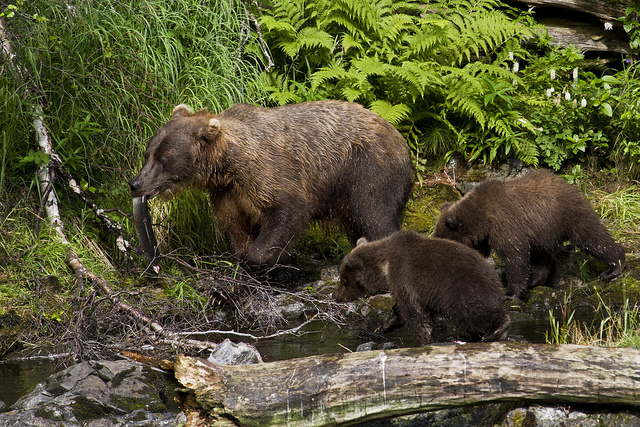It\’s important to be aware of the dangers related to wilderness exploration. Bear encounters are near the top of the list.
One of the first lines of defense is a good spray, like UDAP High Volume Bear Spray. Sure, it\’s produced by a grizzly attack survivor (his bloodied picture graces every can) — but more than that, it just plain works well.
With a 2% capsaicin concentration — the highest EPA recommended — and a range up to 30 feet, you can fend off attacks as soon as you\’re aware of the situation. (The sooner, the better.)
However, a spray is just a defense mechanism. Honestly, we hope you never have to use it. So here are our top 10 tips to avoid or react to encounters:
- Keep your UDAP bear spray out and ready.
- Find out where bear activity has been recently documented.
- Avoid cooking close to your camp.
- Be extra cautious around dawn and dusk.
- Look for fresh tracks or scat.
- Make plenty of noise when you\’re on a trail — especially one with heavy foliage.
- Leave animal carcasses alone; bears may feast on them for days.
- If you see a cub, find an alternate route. The mother is near, and she will be defensive.
- Don\’t look a bear in the eyes — it is threatening to them, and will likely provoke a response.
- If attacked, roll into a ball and protect your vitals. Not only will this help reduce injury, it may remove the perceived threat.
- OK, I lied: There are 11 tips. If, despite your being passive, the bear continues to attack, fight back with whatever means necessary.
Making Your Windows Bird Safe
Windows are a serious problem for our birds, given the glass is worse than being invisible for them as they reflect trees or the sky, making them inviting places for them to fly into. Given the vast amounts of windows in the United States, it is of no surprise that nearly 1 billion birds are killed each year due to flying into windows. Quite often birds will only be temporarily stunned after a collision with a window and fly off, giving the appearance of having recovered. Unfortunately, the majority of these birds will die later on from internal bleeding, particularly on the brain.
It is one of the main reasons why experts believe that general bird population are on the decline and reflects the species whose numbers are decreasing and are known to fly into windows. This is a particularly regular occurrence in big cities with high-rising buildings and skyscrapers where 56% of all window strikes occur in buildings that are over 11 stories high which is an even more prominent statistic as they only make up 1% of all buildings in the United States. For further details on window strikes and how to prevent them for birds then check out this article.

